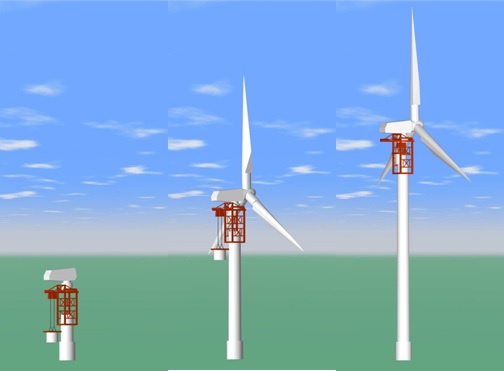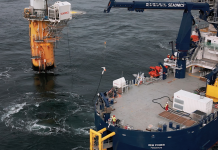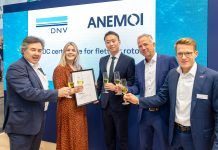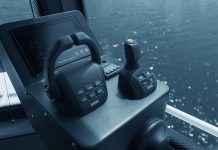
Mammoet has started a joint effort with Sumitomo Mitsui Construction Co., Ltd and FHECOR Ingenieros Consultores for the development of an innovative onshore wind-turbine generator erection system and tower structure. Its self-climbing installation technology erects each wind turbine tower in sections, allowing them to reach to greater heights and more reliable winds.
As nations strive toward 2050 carbon neutrality targets set by the Paris Agreement, onshore wind is seen as a reliable and plentiful source of renewable energy. Installation onshore brings access to stronger and more constant air flows; at higher hub heights this effect is multiplied.
However, as towers stretch toward 200 meters, fewer cranes have the reach necessary to perform turbine assembly on land. Developers then looked at alternative assembly methodologies such as climbing cranes or huge tower cranes, but these are not available in the market. In addition, other massive crawler cranes used are not specifically designed for onshore wind-farm constructions.
Furthermore, when towers approach 200 meters in height, there is an additional requirement for them to be constructed using a concrete or hybrid steel-concrete structure because steel alone lacks the rigidity required to support the weight of the tower, nacelle, and blades.
To address the above challenges, Mammoet, Sumitomo Mitsui Construction, and FHECOR have agreed to start the joint development of a 200-meter tower. The design was by both Sumitomo Mitsui Construction and FHECOR whereas the self-climbing lifting system’s conceptual design was by Sumitomo Mitsui Construction. Mammoet contributed in terms of experience and engineering. Each tower is to be constructed in sections and raised in stages to its full operational height.
This system allows the nacelle to be affixed to each turbine tower at a much lower height than is the case, improving the safety of each lift and allowing customers to choose from a larger pool of cranes that is capable of undertaking this work. In turn, this has a positive impact on both project scheduling and cost.
It will also allow turbine blades to be connected to the nacelle at a lower height and ensure that equipment in use for onshore wind projects does not need to be replaced as hub heights grow.
“With Mammoet, this project moves from concept to reality,” said a representative of Sumitomo Mitsui Construction. “We provided technical development for design and ideation, whereas Mammoet then supporting us with their experience and expertise in heavy lifting and engineering for wind-power and renewables sector. We believe this technology developed will meet gradually also meet the needs of onshore and offshore wind markets not just in Japan, but around the world.”
The technology can be used for both greenfield onshore, offshore wind developments, or for the renewal of existing onshore wind towers. Development of the technology continues.
MORE INFO www.mammoet.com



























